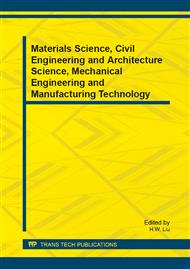p.1336
p.1340
p.1344
p.1348
p.1354
p.1358
p.1363
p.1371
p.1375
Aviation Human Factors Accident Causation Model Based on Structure Entropy
Abstract:
In order to study the traditional accident causation theories and models about human factors in flight accident. A new aviation accident causation model based on the improved HFACS is constructed. Through using system aging, quality and Structure Entropy formula the degree of order of model 1 and model 2 are evaluated, and by selecting aging entropy, maximum timeliness entropy, timeliness, quality entropy and maximum quality entropy the structure of the degree of order is calculated to verify structure in the right to re-bias stability under the conditions. It is shown that the model 2's structure entropy are lower, aging and model quality are also larger, so the improved model is better structural model.
Info:
Periodical:
Pages:
1354-1357
Citation:
Online since:
January 2014
Authors:
Price:
Сopyright:
© 2014 Trans Tech Publications Ltd. All Rights Reserved
Share:
Citation:


